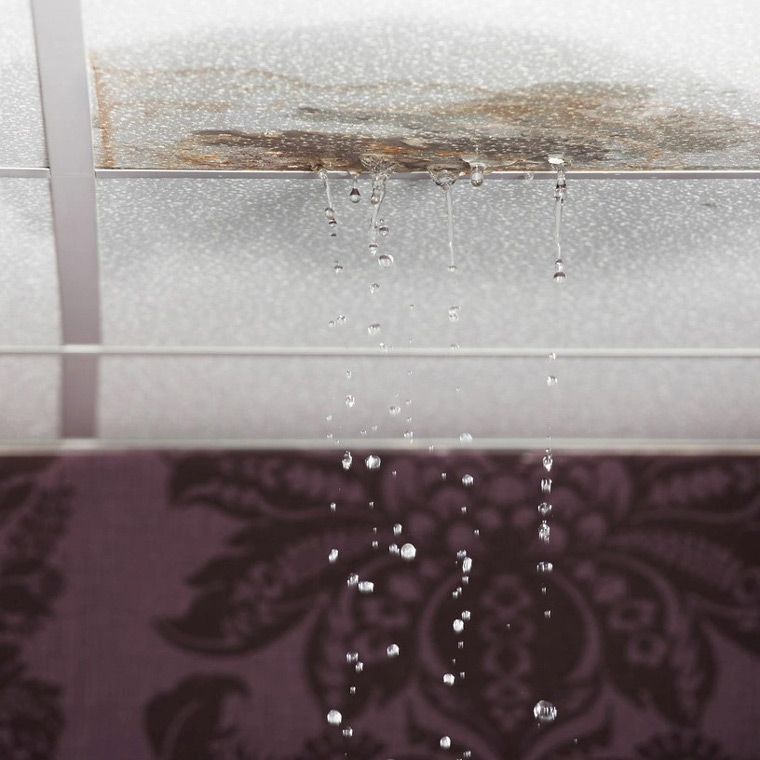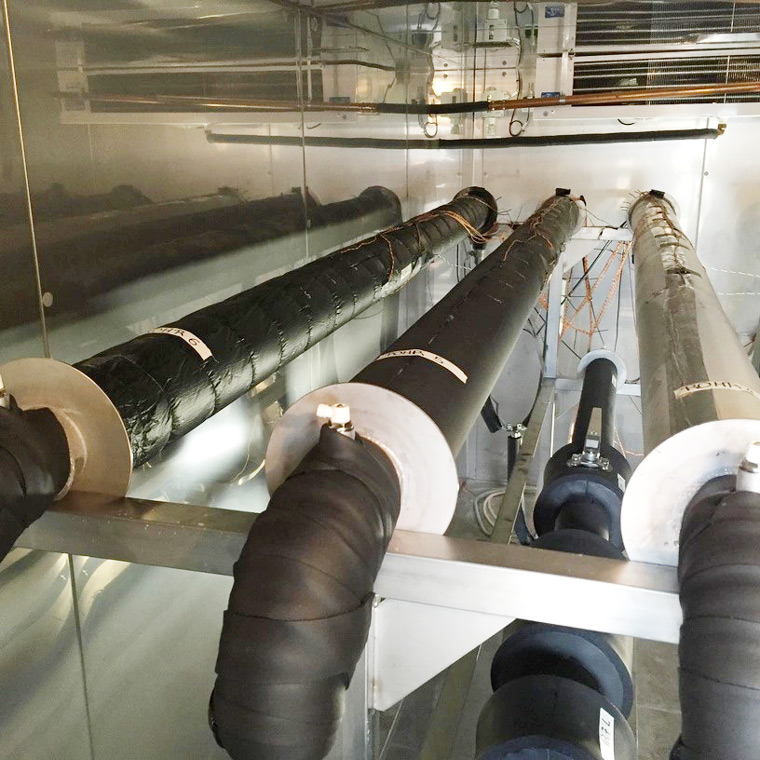4% moisture ingress reduces insulation effectiveness by 70%
Damp insulation cannot insulate. Choose the right insulation material for your application.
Condensation is like raining indoors
Condensed water dripping from the ceiling is undesirable for building users and also damages surfaces and other assets within the building. When condensation on the insulated system occurs, the insulation material – particularly open-cell materials – can get wet. As water has a much higher thermal conductivity than insulation, the absorption of moisture always leads to a rise in the thermal conductivity of the material and a reduction in its insulation performance. In many cases, the damaged insulation is not visible and hence not addressed after the damage is done.
Prevent condensation by keeping insulation surface temperature as high, if not higher, than the dew point temperature.
The air that surrounds us consists of various gases and water vapour. Depending on the environment, the water vapour content of the air can vary greatly. Yet the ability of air to absorb humidity in the form of water vapour is limited. Condensation occurs when the surrounding air is 100 percent saturated with water vapour. Dew point refers to the temperature at which water vapour in the air condenses into liquid. In most countries, the temperature of a chilled water system, refrigeration or cool-air duct system is much lower than the average indoor dew point temperature. Such cold systems sweat quickly and are highly susceptible to the formation of condensation on their surfaces.
Water vapour resistance test of different insulation materials
A study was conducted by the renowned Fraunhofer Institute, Europe‘s largest application-oriented research organisation, to have a better understanding about the impact of moisture on three well-known insulation materials, namely flexible elastomeric foam (FEF), mineral wool with aluminium foil covering and polyurethane (PUR) with polyvinyl chloride (PVC) foil covering.
The experiment
Three test pipes were insulated and set to operate at a line temperature of 20 °C (68 °F) in a climate chamber. This is to ensure that the ambient temperature of 35 °C (95 °F) and relative humidity of 55 percent was consistent throughout the test period of 33 days. For added realism, two small holes of 5 mm (0.2 in) in diameter were drilled, 5 mm (0.2 in) deep into the surface, on opposite sides of the pipe section. This is to simulate damage to the insulation system, which is often the rule rather than an exception in practice. At the end of the test, the amount of moisture the insulation materials would absorb over 33 days was measured.
The results
At the end of 33 days, the water vapour diffusion resistance factor (μ-value) was similar for FEF in both the undamaged and damaged pipes at about 10,000. The μ-value of mineral wool with aluminium covering was 7,053 on the undamaged pipe and 467 on the damaged pipe. The μ-value of PUR with PVC covering was 2,163 and 672 respectively.
After 10 years, the moisture content in FEF is 4x less than mineral fibre or PUR
To investigate the potential long-term effects of moisture absorption, the Fraunhofer Institute simulated how the insulation materials could behave over a period of ten years. Several assumptions were made for this calculation: the pipe would run at a line temperature of 5 °C (41 °F) in an ambient environment of 35 °C (95 °F) and relative humidity of 80 percent. Their results indicate that the moisture content in FEF would still be under 5 percent, while that of mineral wool and PUR would rise to almost 20 percent and 25 percent respectively after ten years. Also the λ-value of FEF would rise by only 15 percent, while that of mineral wool and PUR would have increased by 77 percent and 150 percent respectively.
This test demonstrates that closed-cell flexible elastomeric foams with its integrated water vapour diffusion resistance is more tolerant against small defects in the insulation as compared to other tested insulation materials.
External water vapour barriers are damaged over time
Open-cell materials such as glass wool insulation is commonly used but it is susceptible to moisture absorption and require a thin aluminium or PVC foil as a water vapour barrier. However, the foil is easily damaged during installation and use. Water vapour can penetrate through these tears and accumulate within the open-cell insulation material. Also, it is difficult to ensure adequate or uniform insulation thickness throughout the system, especially around bends and complex shapes. Hence, condensation can happen especially in areas such as pipe brackets, elbows, T-pieces, valves and fittings. The moisture amassed over time not only reduces the thermal performance of the system, it can also result in serious repair and structural degradation costs due to issues such as corrosion under insulation.






